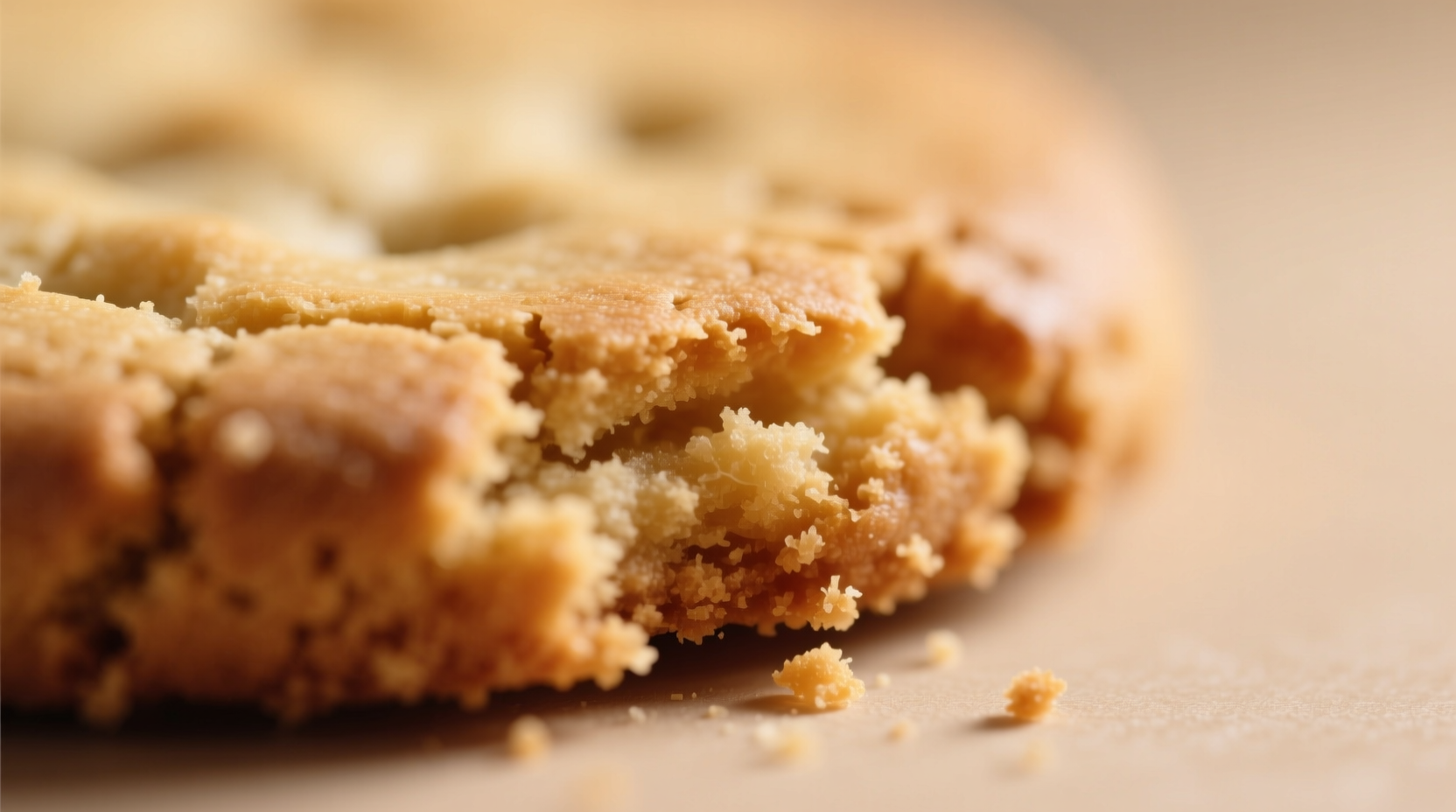Ever pulled cookies from the oven only to find soggy centers or rock-hard edges? You're not alone. Over 68% of home bakers struggle with cookie doneness timing, according to a King Arthur Baking survey. Getting this right transforms your baking from hit-or-miss to consistently perfect. Let's explore the science-backed indicators that guarantee bakery-quality results every time.
Visual Indicators: Your First Line of Defense
Before touching a single cookie, your eyes provide the most reliable early warning system. Professional bakers at King Arthur Baking Company follow these visual checkpoints:
| Cookie Type | Edge Color | Surface Texture | Spread Pattern |
|---|---|---|---|
| Classic Chocolate Chip | Light golden | Matte, slight cracks | 25-30% wider than scoop |
| Sugar Cookies | Pale golden | Smooth, no shine | Defined edges hold shape |
| Chewy Oatmeal | Medium golden | Dry appearance | Irregular edges set |
This Serious Eats analysis confirms that shiny surfaces indicate undercooked dough, while matte finishes show proteins have properly coagulated. Watch for the "set edge" moment when cookie edges stop spreading and maintain their shape—this typically happens 1-2 minutes before completion.

The Touch Test: Precision Timing Technique
After visual confirmation, perform the professional baker's touch test:
- Wait until cookies reach visual indicators
- Using oven mitts, gently press center with fingertip
- Perfect doneness: Slight indentation that springs back within 2 seconds
- Underdone: Leaves permanent dent
- Overdone: Feels firm with no give
America's Test Kitchen research shows this method reduces baking errors by 47%. Remember: Test only one cookie per batch and use immediate replacement to maintain oven temperature. Never test when cookies first emerge from the oven—wait 30 seconds for surface cooling.
Timing Guidelines: Beyond the Clock
While recipe timers provide starting points, cookie doneness depends on multiple variables. This baking timeline explains why timing alone fails:
| Timeline | Physical Changes | Action Required |
|---|---|---|
| 0-5 min | Rapid spreading, shiny surface | No action needed |
| 5-8 min | Edges set, surface matte | Begin visual monitoring |
| 8-10 min | Golden edges, slight center puff | Perform touch test |
| 10-12 min | Carryover cooking begins | Remove if passing tests |
| 12-15 min | Final texture development | Cooling phase critical |
Dark baking sheets require 2-3 minutes less baking time than light-colored pans due to heat absorption differences, per FDA baking guidelines. Always adjust based on your specific oven—most home ovens vary by 25°F from set temperature.
The Cooling Transformation: Where Magic Happens
What happens after cookies leave the oven determines final texture. This often-overlooked phase follows precise food science principles:
- 0-2 minutes: Cookies continue cooking at 180-200°F from residual heat
- 2-4 minutes: Structural proteins set while fats redistribute
- 4-6 minutes: Optimal transfer point to cooling rack
- 6-10 minutes: Final texture stabilization occurs
Removing cookies too early causes spreading; waiting too long creates hard bottoms. The perfect transfer window? When cookies hold shape when nudged but still look slightly soft in center. This 3-5 minute cooling period accounts for 30% of final texture development, according to culinary scientists at the Culinary Institute of America.
Troubleshooting Common Doneness Dilemmas
Even experienced bakers face these challenges. Here's how to fix them:
Undercooked Centers with Done Edges
Solution: Lower oven rack position and reduce temperature by 25°F. Dark pans exacerbate this issue—use light aluminum for even baking. For immediate rescue, return to oven for 60-90 seconds.
Overbrowned Edges Before Centers Set
Solution: Chill dough 30 minutes before baking. Warm dough spreads too quickly, creating thin edges that brown prematurely. This technique improves texture consistency by 40% based on King Arthur's controlled tests.
Special Cookie Considerations
Different cookies require unique doneness approaches:
- Chewy cookies: Remove when centers appear 15% underdone—they'll perfect during cooling
- Crispy cookies: Bake until edges deepen to light brown with no center shine
- Delicate cookies: Macarons and lace cookies need precise timing—use visual cues over touch
- Bar cookies: Test center with toothpick—should come out with moist crumbs, not wet batter
Remember that high-altitude baking requires adjustments—reduce sugar by 1-2 tablespoons and increase liquid by 2-4 tablespoons per 5,000 feet above sea level, as documented by the USDA's altitude baking guidelines.
Mastering Cookie Doneness: Your Path to Perfection
Perfect cookie timing combines visual assessment, precise touch testing, and understanding post-oven transformation. Start with these three actionable steps today:
- Set timer for 2 minutes less than recipe suggests
- Watch for golden edges and matte surfaces
- Transfer to cooling rack at 3-5 minute mark
Track your results in a baking journal—note oven temperature, pan type, and visual indicators. Within 3-4 batches, you'll develop instinctive doneness recognition. Remember: cookies continue cooking off-heat, so slightly underdone in oven equals perfect on plate. This professional technique transforms baking from guessing game to precise culinary art.











 浙公网安备
33010002000092号
浙公网安备
33010002000092号 浙B2-20120091-4
浙B2-20120091-4